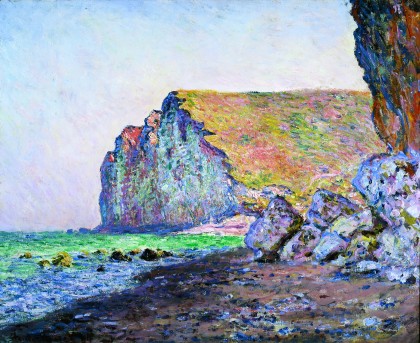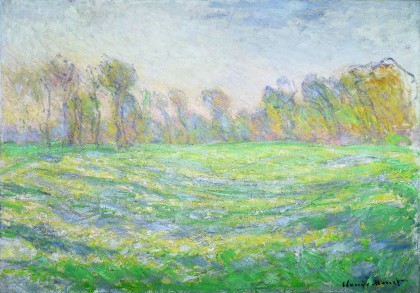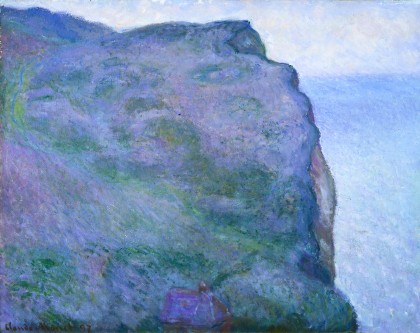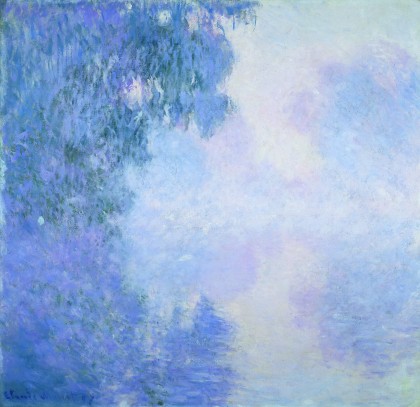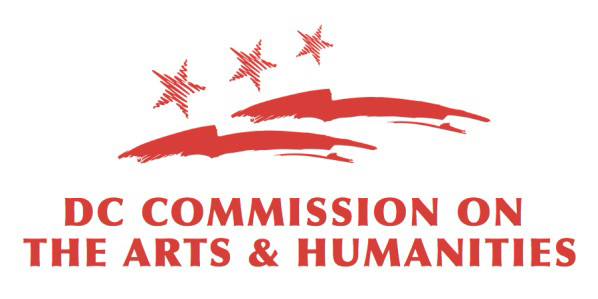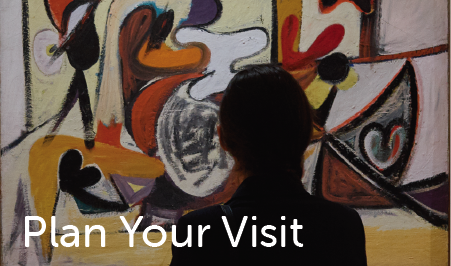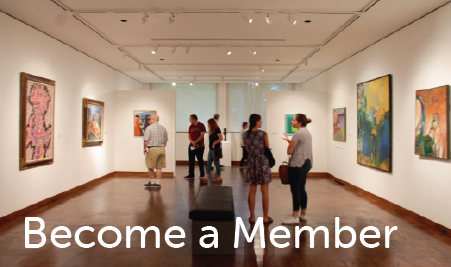Past ExhibitionsOn view this fall in the Great Hall and the Garden GalleryAll nine works by Claude Monet (French, 1840-1926) from the Permanent Collection
The Collaborative | WATER IN THE GASJune 7th - August 23rd, 2025
Installation image by Vivian Marie Doering. About the ArtistsEdgar Reyes (b. 1990; Guadalajara, Mexico) is a multimedia artist and professor based in Baltimore, Maryland. His work invites viewers to think about the people, places, and connections they carry with them. Reyes’ practice draws on the specifics of his own life and reflections of shared experiences of resettlement and migration. Through his art-making, he explores his family’s Mexican and Indigenous roots. Reyes earned his MFA from the Maryland Institute College of Art and has taught at nonprofit organizations, schools, universities, and museums. His work has been prominently featured in large-scale public installations and in galleries and public spaces across the United States. In recent years, Reyes’ work has been exhibited and collected by various museums and institutions, including The Walters Art Museum and Johns Hopkins University. Misha Ilin (b. 1985; Protvino, Russia) is an interdisciplinary artist working across installation, performance, sculpture, and writing. He interrogates communicative divides within political, ecological, and economic systems, examining how constructed realities arise under conditions of authority, bureaucracy, and control. Frequently incorporating instructional prompts as participatory tools, Ilin positions his projects as a form of social inquiry, bridging personal narratives with larger systemic structures. Misha studied art at the National Center for Contemporary Art in Moscow. In 2016, he moved to the United States to pursue his Master’s in Fine Arts. Ilin is a recipient of the Research and Publication Grant from Washington Project for the Arts (2023). His recent exhibitions include Pale Grass Blue at Hamiltonian Artists (Washington, DC); Wish the Past Never to Repeat Itself at The Kitchen (Berlin, Germany); and Inquisitive Instructions at the Modern Art Museum (Shanghai, China). Misha Ilin currently lives and works in New York. Isabella Whitfield (b. 1998; Centreville, Virginia) is a multidisciplinary artist based in Virginia, working in papermaking, sculpture, and site-responsive installation. Her work explores how the function and history of objects can be abstracted through material, repetition, and context. After earning BAs in Sculpture and Politics from the University of Virginia, she completed a postgraduate year as an Aunspaugh Art Fellow. Whitfield exhibits primarily in the DMV area and has been a resident artist with Penland, Anderson Ranch, Ox-Bow, Pyramid Atlantic, VisArts Richmond, and VisArts (Rockville). She was a 2022–2024 Hamiltonian Fellow and is currently a Papermaking Associate at Pyramid Atlantic. Madyha J. Leghari (b. 1991; Multan, Pakistan) is a visual artist, writer, and educator working between Lahore and Washington, DC. She holds a BFA from the National College of Arts, Lahore, and an MFA from the Massachusetts College of Art and Design through a Fulbright scholarship. Her multidisciplinary practice interrogates the possibilities and limits of language and the body, occupying the interstices of poetry, post-humanism and semantic play. Leghari has been recognized with numerous prestigious fellowships and residencies, including the Hamiltonian Artists Fellowship, Wherewithal Research Grant, Islam & Print Fellowship, Delta Research Placement at Flat Time House, and Siena Art Institute Residency. Her work has been exhibited internationally at venues such as the Pera Museum, Karachi Biennale, University of Colorado Boulder, and Bennington College, spanning the Americas, Asia, and Europe. Her work has been featured in The Washington Post, Artforum, and The News Pakistan. She has taught at the National College of Arts, Lahore; the Massachusetts College of Art and Design; and Beaconhouse National University. The Collaborative | Simmie Knox: Selected WorksFebruary 15th, 2025- April 26th, 2025
Simmie Knox (b. 1935), A Place: Suspended, 1970. Acrylic and enamel on canvas (diptych). Photography courtesy of Greg Staley. The Kreeger Museum is pleased to present Simmie Knox: Selected Works, on view from February 15th through April 26th, 2025. Works on view include three abstract paintings from 1970 and one painted in 2024. This exhibition is presented under The Collaborative, a program developed by The Kreeger Museum in 2021 to support Washington-area artists. About Simmie KnoxA graduate of Tyler School of Art at Temple University (BFA, Magna Cum Laude; MFA) in Philadelphia, Simmie Knox, in the 1970s, exhibited as an abstract artist and worked for The Museum of African Art in Washington, DC. Throughout the 70s, Knox also taught art at various colleges and universities in Delaware, Pennsylvania, and the District of Columbia. This abstract diptych by Knox from 1970, entitled A Place: Suspended, is a large-scale work, composed of two panels covered with surging waves of color, from rich earthy reds and yellows to deep, vibrant blues and greens. In a 2007 interview with Amy Cavanaugh for the DCist, Knox explained that the motivation behind A Place: Suspended is color. “It’s a piece that I produced because at the time I was really concerned with the movement of color when it’s sprayed as opposed to painted, and the visual effects you could provide,” he says, “[Spraying color] creates a kind of an illusion.” A Place: Suspended was included in the 32nd Biennial Exhibition of Contemporary American Painting at the Corcoran Gallery of Art in 1971, where David and Carmen Kreeger first saw the work before acquiring it. Knox moved to the Washington area in 1972, and soon turned away from abstraction to focus exclusively on portraiture. While Knox has remarked that the change was driven by his penchant for capturing the human figure, he attributes his time working in abstract painting as important to his understanding of space and color. The Collaborative | The DMV Collects the DMVThe Kreeger Museum and The Washington Print Club are pleased to present The DMV Collects the DMV, on view at The Kreeger Museum from October 26, 2024 to February 1, 2025.
Tom Green, Message, 2008. Screenprint. Collection of Brigitte Reyes and Lawrence Mills Davis. "The DMV Collects the DMV celebrates the 60th anniversary of the Washington Print Club by presenting an encapsulated history of regional artists and institutions selected from members' collections. Forty-nine artists who lived or built their careers in the District-Maryland-Virginia (DMV) region are represented by works on paper, ranging from drawing, painting, and photography to print-making. This multigenerational assemblage of artists established and were supported by key educational institutions and print workshops. The Corcoran School of Art, Howard University, and Maryland Institute College of Art (MICA) provided valuable training, employment, and art community cohesion for decades. No fewer than five important print workshops were established by artists included in the exhibition: The Workshop Inc. (Lou and Di Stovall), Pyramid Atlantic (Helen Frederick), Handprint Workshop International (HPWI was established by Dennis O'Neil, who taught at the Corcoran and printed the work of several artists in the exhibit), Lily Press (Susan Goldman), and Sol Print Studio (Soledad Salamé)." - Laura Roulet, Guest Curator, The Washington Print Club This exhibition is presented under The Collaborative, a program developed by The Kreeger Museum in 2021 to support Washington-area artists. Featured ArtistsRush Baker IV, Leon Berkowitz, Zoë Charlton, William Christenberry, Wesley Clark, Steven Cushner, Gene Davis, Werner Drewes, Cheryl Edwards, Edgar Endress, Mary Early, Rosemary Feit Covey, Helen Frederick, Sam Gilliam, Susan Goldman, Tom Green, Mike Hagan, Mira Hecht, James Hilleary, Hedieh Javanshir Ilchi, Martha Jackson Jarvis, Lois Mailou Jones, Jacob Kainen, Kevin MacDonald, linn meyers, Jiha Moon, Cory Oberndorfer, Terry Parmelee, Jefferson Pinder, Michael Platt, Carol Reed, Charles Ritchie, Rozeal, Soledad Salamé, Joyce J. Scott, Luis Silva, Elzbieta Sikorska, Molly Springfield, Eve Stockton, Renée Stout, Di Bagley Stovall, Prentiss Taylor, Caitlin Teal Price, Ben Tolman, Andrea Way, James Lesesne Wells, Wilmer Wilson IV, Julie Wolfe, Sue Wrbican Here, in this little Bay: Celebrating 30 Years at the KreegerJune 1, 2024 – October 5, 2024
Fourteen artists from nine countries reflect on our interactions with the natural environment in the Kreeger Museum’s 30th-anniversary exhibition titled Here, in this little Bay: Celebrating 30 Years at the Kreeger. The exhibition is on view from June 1, 2024–October 5, 2024. Founded by David and Carmen Kreeger, the Kreeger Museum opened in 1994, featuring the couples’ collection of exquisite holdings in American and European modernism and African and Asian art in a stunning travertine and glass building designed by Philip Johnson and Richard Foster. The building, which had functioned as the Kreegers’ home since the 1960s, uniquely combines art, architecture and landscape in intimate galleries, verdant courtyards, and sculpture-filled grounds. This appreciation of the living environment, heightened by the presentation of exceptional land and seascape paintings by Max Beckmann, Pierre Bonnard, Claude Monet, Odilon Redon, Auguste Renoir, Alfred Sisley and other distinguished artists in the permanent collection, inspired an anniversary exhibition that looks at artists’ changing approaches to the natural world since the French Impressionists worked en plein air during the late 19th-century. “This exhibition introduces a thought-provoking range of creative visions that address environmental disruption and sustainability today. It is an honor to have the work of these artists in our gallery spaces,” says Kreeger Director Helen Chason. Comprising artists from Argentina, Burma, Chile, Côte d’Ivoire, Greece, Japan, Korea, Iran and the United States, the exhibition includes photographs, paintings, drawings and sculptures with both representational and conceptual approaches considered. Artists who explore the wondrous abstract structures and patterns of nature are complemented by those who more specifically investigate the ways that labor, migration, trade and conflict interface with the environment. Nature is contemplated as a model of endurance and growth, as well as an entity subject to extreme human interventions, including climate change and nuclear devastation. “A group of ethereal waterscapes by Monet installed in galleries punctuated with windows that let the outside in, inspired me to gather an intergenerational, global group of artists--all now living in Maryland, Washington and Virginia--who view landscape and nature through a 21st-century lens,” observes guest curator Kristen Hileman. Hileman, who brings twenty years of experience as a curator at the Smithsonian’s Hirshhorn Museum and Sculpture Garden and the Baltimore Museum of Art to the project, continues: “The work of creatives such as these has been and will be instrumental to developing more sustainable attitudes towards living together on our shared planet. Our perspectives have changed since 19th-century painters emphasized the untouched beauty of nature in their works. Artists still seek the sublime in the natural world, but they also make human impact visible. Awareness has grown even since the Kreeger opened its doors in 1994. As a point of reference, the well-known climate activist Greta Thunberg wasn’t born until 2003.”
Participating Artists
David Carlson (American, b. 1956, Champaign, IL; lives and works in Washington, DC metro area) Chan Chao (American, b. 1966, Kalemyo, Burma, lives and works in Takoma Park, MD) Jae Ko (Korean American, b. Pyeongtaek-si, Korea; lives and works in Alexandria, VA and Piney Point, MD) Marty Koelsch (American, b. 1995, Sandusky, OH; lives and works in Baltimore, MD) Juan Maidagan (Argentinian, b. 1957, Rosario, Argentina; lives and works in Baltimore, MD and Berlin, Germany) linn meyers (American, b. Washington, DC; lives and works in Washington, DC and Los Angeles, CA) Kristin Putchinski (American, b. 1975, Plano, TX; lives and works in Baltimore, MD) Athena Tacha (American, b. 1936, Larissa, Greece; lives and works in Washington, DC) Dolores Zinny (Argentinian, b. 1968, Rosario, Argentina; lives and works in Baltimore, MD and Berlin, Germany) Monsieur Zohore (Ivorian American, b. 1993, Potomac, MD; lives and works between Richmond, VA; New York, NY; and Abidjan, Côte d’Ivoire Generous support provided by: The Galper Family Charitable Fund The Marilyn Lichtman Fund DC Commission for the Arts and Humanities
The Collaborative | SOLSTICEDecember 9, 2023 – February 24, 2024
The Kreeger Museum and Tephra Institute of Contemporary Art (Tephra ICA) are pleased to present SOLSTICE, a solo exhibition by sculptor Kendall Buster in conjunction with her solo presentation, SEED, concurrently on view at Tephra Institute of Contemporary Art (Tephra ICA) in Reston, Virginia. This exhibition is presented under The Collaborative, a program developed by The Kreeger Museum in 2021 to support Washington-area artists. About the ArtistKendall Buster earned a BFA degree from the Corcoran College of Art and Design in Washington, DC, and an MFA in Sculpture from Yale University. Additionally, she participated in the Independent Study Studio Program at the Whitney Museum of American Art in New York, NY. The Collaborative | Still Something SingingOctober 21, 2023 - January 27, 2024
--from “The Leash” by Ada Limón (The Leash by Ada Limón | Poetry Foundation) The Kreeger Museum is pleased to present Still Something Singing, October 21, 2023 - January 27, 2024, with Washington Sculptors Group. Betsy Johnson, Assistant Curator, Hirshhorn Museum and Sculpture Garden, is the Juror for this exhibition of outdoor work that reflects the role of art in our contemporary moment. The eight artworks included in Still Something Singing are provocations to look closely and view our surroundings, and perhaps even ourselves, with new eyes. They function in various ways: encouraging us to shift our perspective, exercise compassion, locate beauty in dissonance, gather, and heal. And they encourage us to act because making art is an assertion that one human can create change, however small, in the fabric of our world. It is a belief that no matter how powerless you feel today, there are still things that you can do that will make tomorrow different from today. The Collaborative | Doing The WorkMay 13, 2023 - August 5, 2023
There are several pockets of contemporary discourse—from social justice to mental health—in which the question often arises: “what does doing The Work look like?” In this group exhibition that includes photos, sculpture, drawings, and video, “The Work” is both personal and collective, theoretical and tangible. It takes shape in various forms, such as domestic labor, self reflection, and methodical construction. Rather than focusing on end results, each piece is evocative of progression, calling attention to the patience, play, and serendipity that occurs within periods of growth and development. In Doing The Work, two fundamental truths emerge at the fore; the work looks different for each of us, and there is always more to be done. This exhibition is presented under The Collaborative, a program developed by The Kreeger Museum in 2021 to support Washington-area artists. Presented in collaboration with Hamiltonian Artists.
Curated by Anisa Olufemi. Digital Exhibition Catalog This project is supported by the DC Commission on the Arts and Humanities. The Collaborative | INTERLUDEFebruary 11, 2023 - March 25, 2023
|





